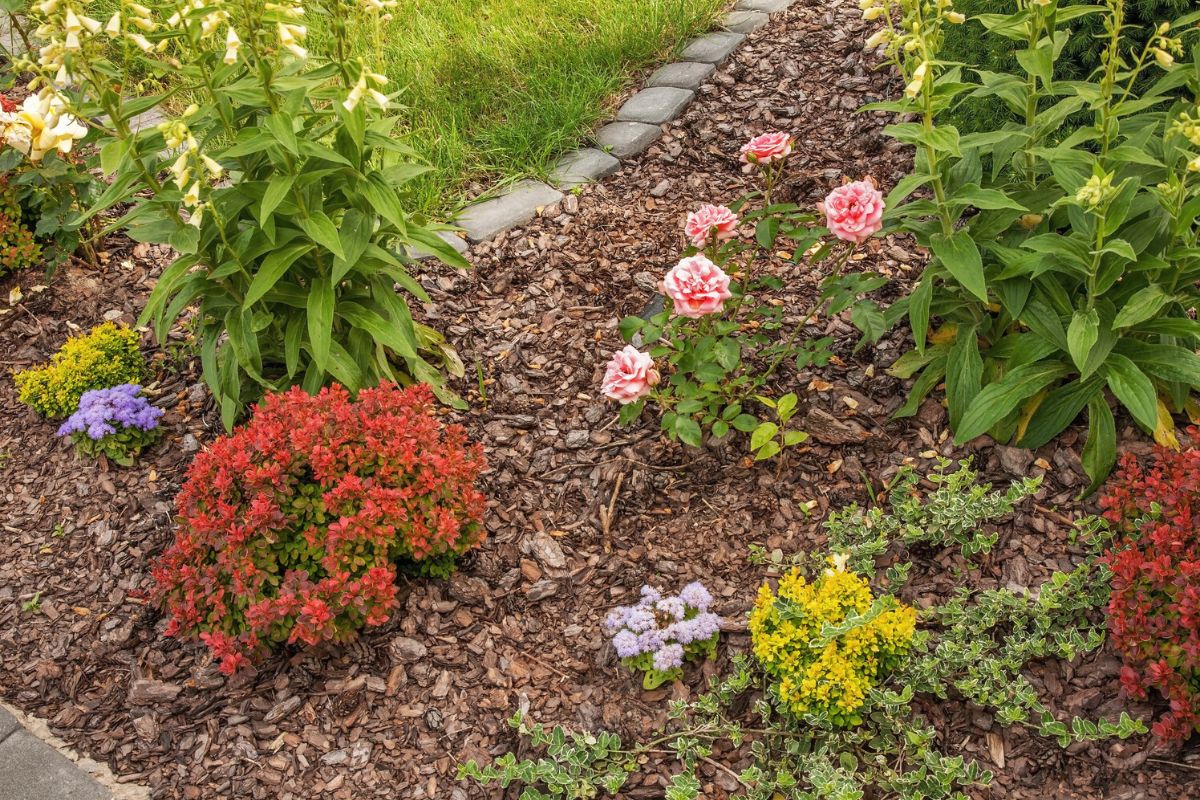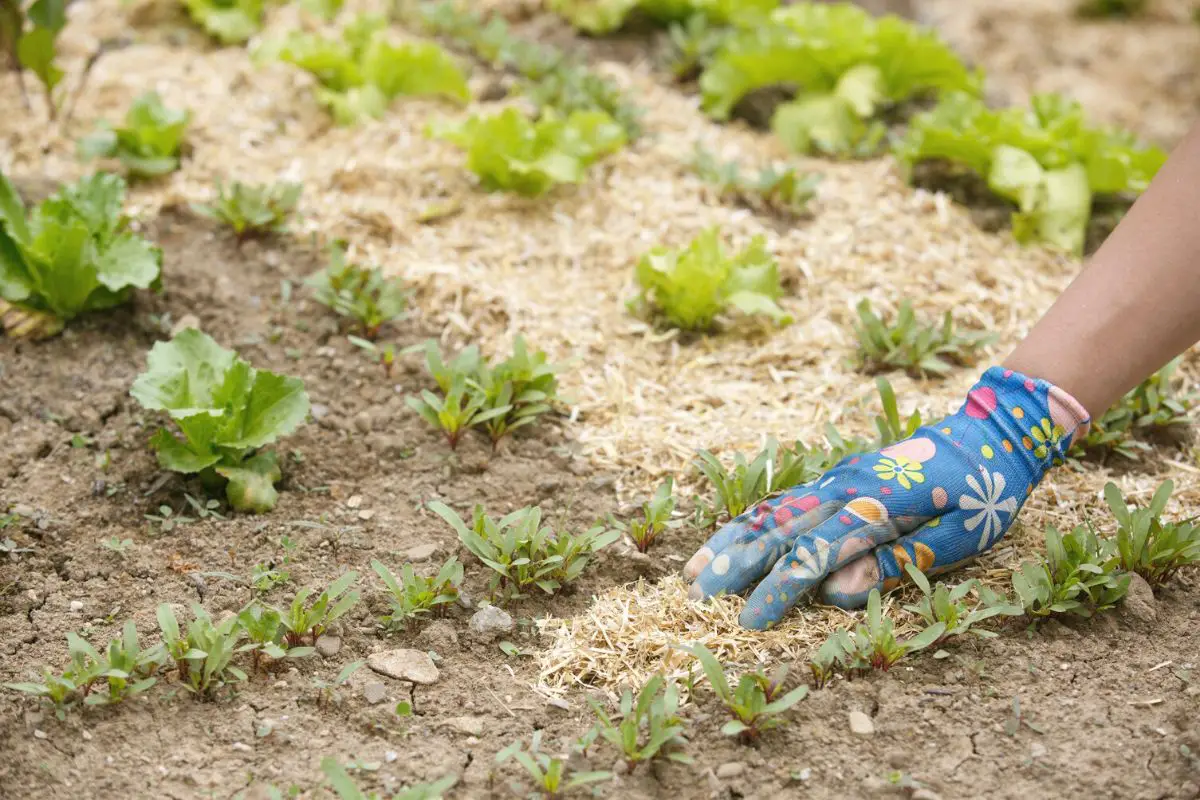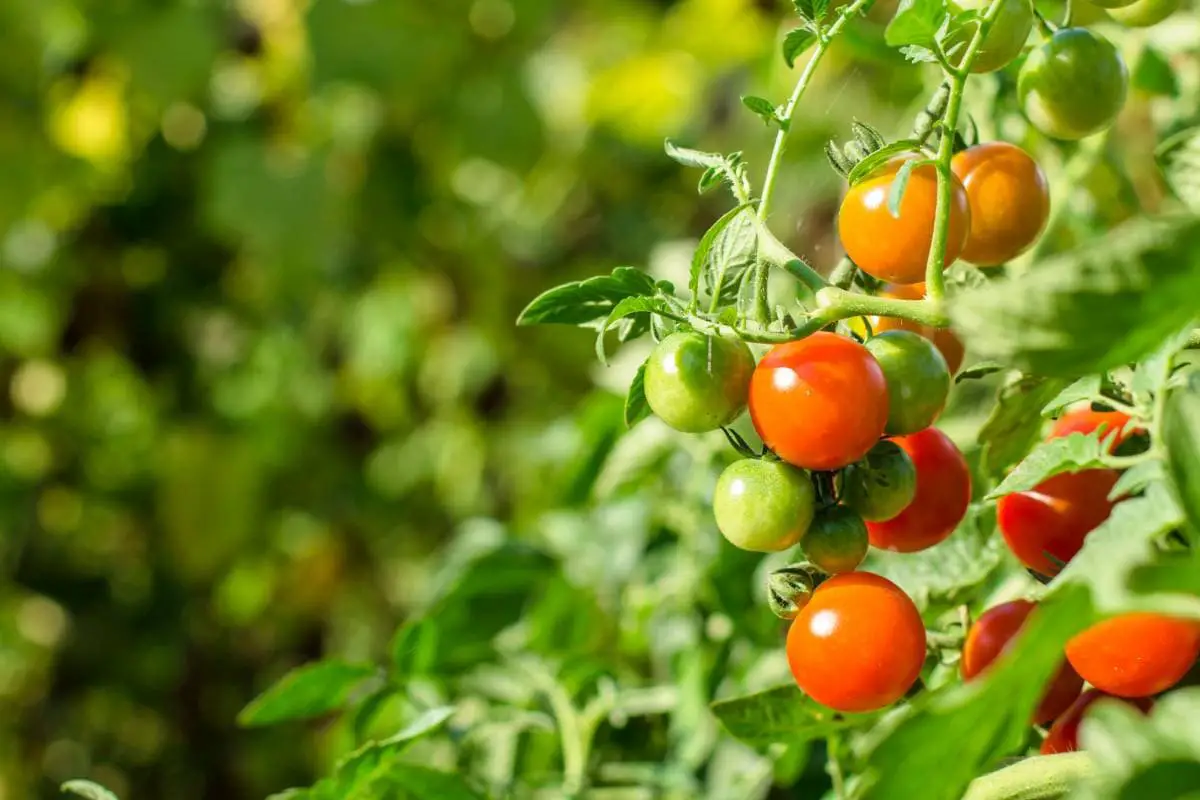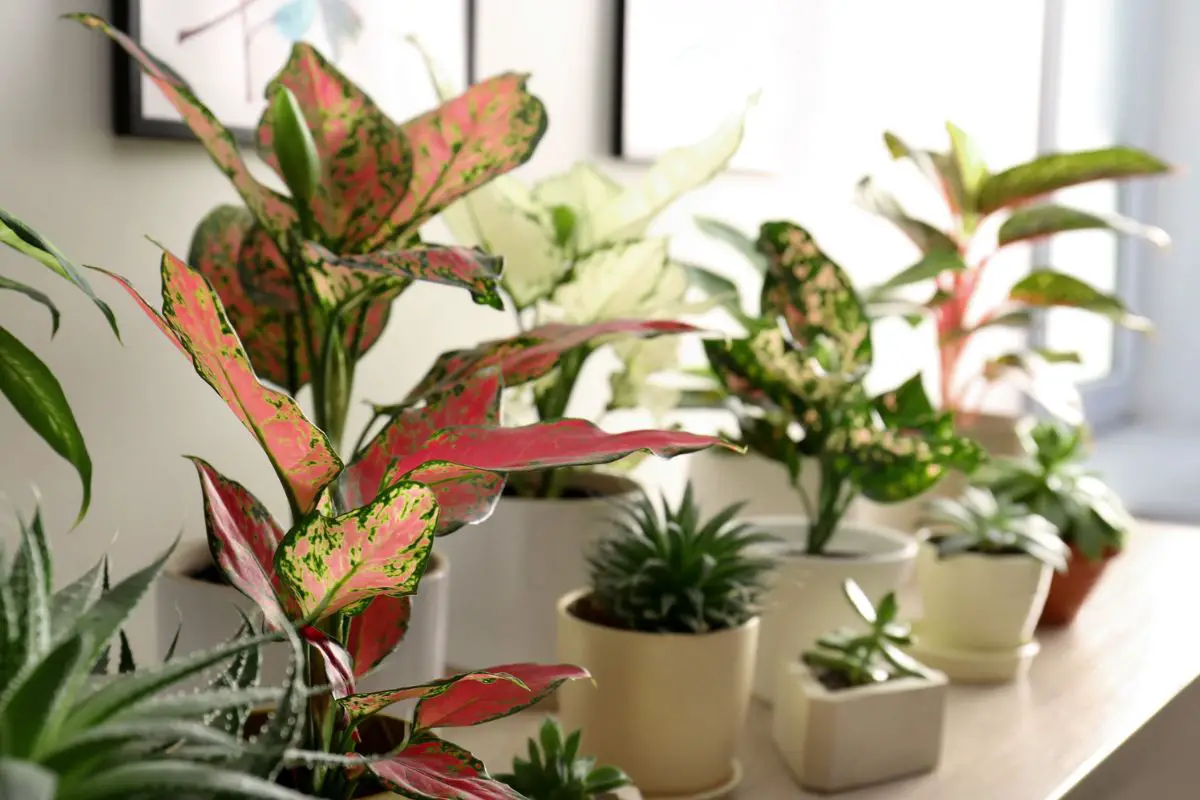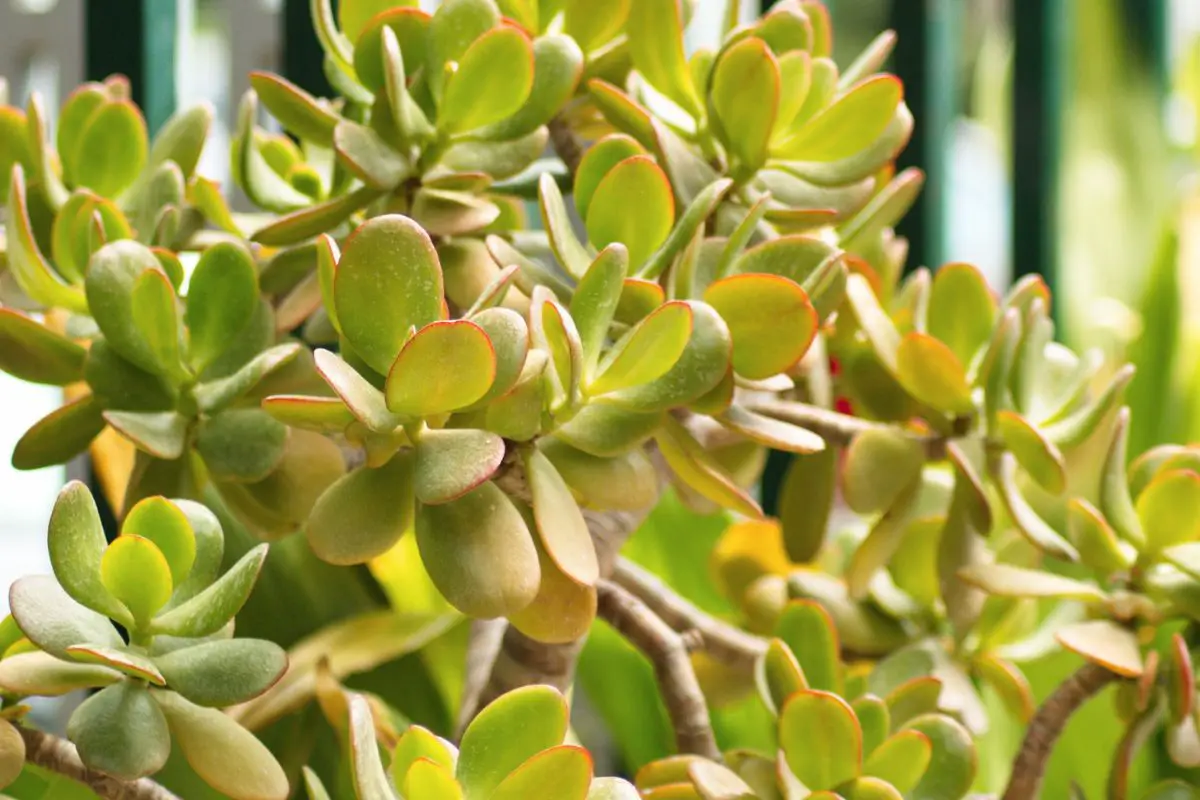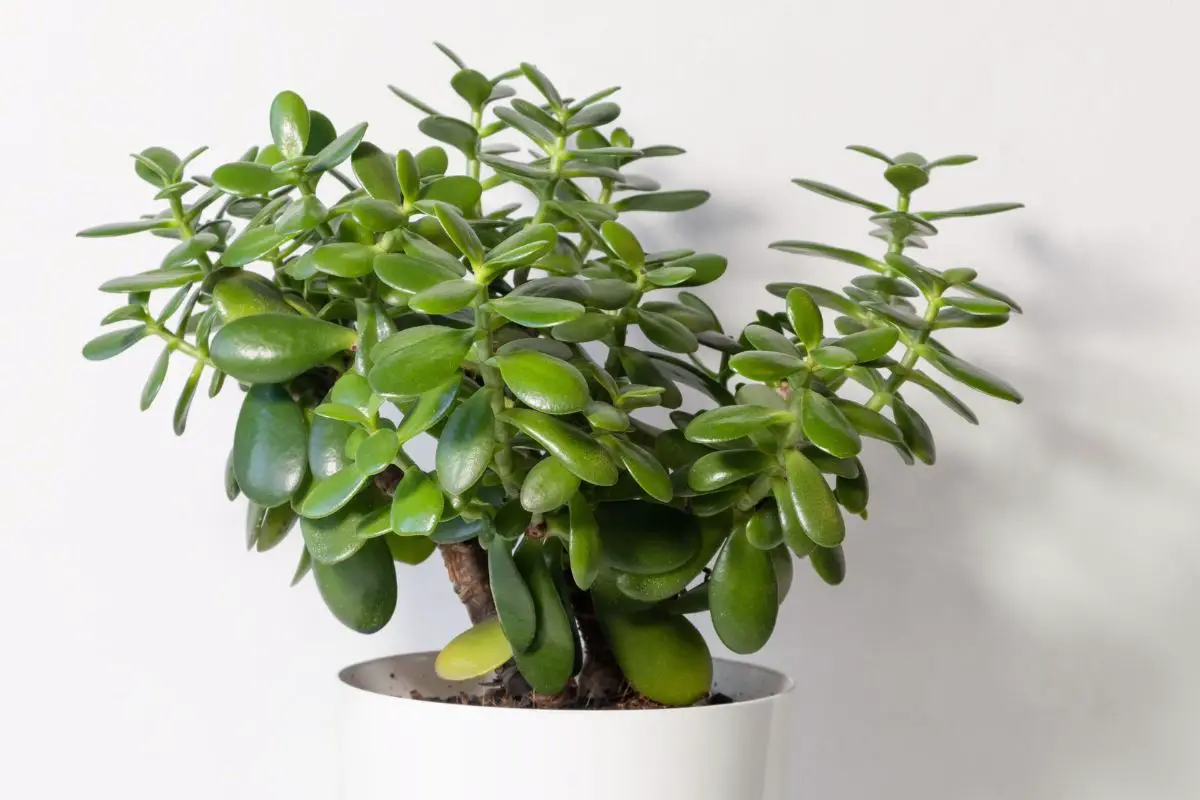Cherry tomatoes are popular for home gardeners because they’re easy to grow and don’t need lots of space. In addition, they’re bursting with flavor and ripen earlier than the large varieties. Their juicy fruits will keep you coming back for more, and you may wonder if they will regrow after picking.
Most cherry tomatoes are indeterminate, growing like vines and producing multiple crops throughout the growing season. On the other hand, determinate varieties are compact and produce a single crop before they lose vigor. They are suited to shorter growing seasons and smaller growing spaces.
In this article, I’ll discuss the differences between indeterminate and determinate cherry tomatoes and share tips on how to maximize your yield and properly harvest the fruits. I’ll also debunk and explain some common myths about these tasty fruits.

Cherry Tomato Plants: An Overview
Cherry tomatoes (Solanum lycopersicum var. cerasiforme) are native to South America. The present-day fruits have a long history of domestication. They were cultivated from wild tomato fruits growing in the Andes.
Cherry tomatoes are bite-sized versions of common tomatoes (S. lycopersicum) and thrive in almost similar growing conditions. However, they mature earlier than the larger varieties and, being small, pack in more antioxidants and have more intense flavors.
Indeterminate vs. Determinate Varieties
Like their larger cousins, cherry tomatoes have determinate and indeterminate varieties.
- Determinate plants have been bred to grow to a specific height, set fruit all at once, stop growing, and eventually die. These varieties are ideal for cold climates with a short growing season.
- Indeterminate cherry tomato plants produce multiple batches of fruits. Even as the first batch of fruit ripens, the plant continues to grow and set flowers which turn into another batch of fruits. This process continues until growth stops due to external factors like frost and pruning of the terminal or growing tip.
Here’s a chart to explain the differences between determinate and indeterminate cherry tomatoes:
| Traits | Determinate Cherry Tomatoes | Indeterminate Cherry Tomatoes |
| Growth Habit | Grows to a pre-determined height before producing side shoots that bear fruit Shoots stop growing after flowers form. Has a compact, bushy look Can be grown without support | Can grow indefinitely tall as long as you water and fertilize it Flowers continue to form on the side as the shoots keep growing until the end of the growing season. Is a vining plant Needs trellising, staking, or caging because their stems are long |
| Approximate Height at Maturity | 5 feet (1.5 m) or less | Can grow as long as 10-12 feet (3-3.6 m) |
| Fruiting Cycle | Sets all fruits at once after the plant stops producing leaves four to five weeks from planting Ripens earlier than indeterminate varieties | Sets fruits throughout the growing season over two to four months |
| Suitable Planting Space | Containers | Garden beds and large spaces |
| Ideal Climate | Cold climates with a short growing season | Warm climates |
| Ideal Use | When a large crop is needed at once, such as for canning and preserving For mechanical harvesting | To provide a continuous fresh supply of fruits throughout the growing season |
Growth Characteristics of Indeterminate Cherry Tomatoes
Most cherry tomatoes are indeterminate and have an interesting life cycle. A month after sowing the seeds, your plant will typically start setting a few flowers, which will set fruits and ripen in the following weeks.
The growth cycle doesn’t stop after harvesting the first batch of fruits.
The plant will continue to grow and produce more fruits for up to 3 years in frost-free regions if the light and watering conditions are right. It will eventually lose vigor and have lower yields until it dies out.
In colder climates, spring-sown cherry tomatoes will last only until the first frost because they’re not tolerant of temperatures below 60 °F (15.6 °C).
The Process of Fruit Regrowth
In the wild and its place of origin, a cherry tomato plant exhibits a sympodial branching pattern that alternates between vegetative and reproductive growth phases.
Here’s how the sympodial growth pattern manifests in tomatoes:
- The primary shoot produces 7-12 leaves (vegetative growth) before it stops growing and forms a flower (reproductive growth).
- A sympodial shoot develops near the uppermost leaf bud just below the flower and produces 3-4 leaves before it stops growing and forms a flower.
- Another sympodial shoot forms near the last leaf of the older sympodial branch and produces most often 3 leaves before terminating in a flower.
- The flowers set earlier will produce the first batch of fruits. The plant doesn’t stop producing new branches despite flower formation or fruit ripening.
- The plant continues this growth pattern, resulting in multiple batches of fruits ripening at different times until the plant dies from the frost.
This behavior is influenced by the sp gene, which regulates the switch between the vegetative and reproductive phases of the tomato plant.
A mutation of the sp gene, sometimes induced in genetically modified tomatoes, produces a compact determinate growth habit. Because of this gene, determinate tomatoes grow bushy and stop growing vertically after reaching a certain height based on the species.
The plant will then focus on setting flowers and fruits, and no new vegetative growth will occur from there. That’s why the fruits ripen almost all at once.

Factors Affecting Continuous Fruit Production
If you are growing indeterminate cherry tomatoes, your plant will continue to produce fruits after the first harvest.
Here are some factors that influence how productive your plant will be:
- Sunlight: Cherry tomatoes require full sun or 6-8 hours of direct sunlight daily. The flowering and fruiting processes require much energy so your plant will need as much sunlight as possible.
- Water: Cherry tomatoes are famous for their juiciness, which they can achieve only with enough water. When the plant starts setting fruits, increasing the watering amount and frequency weekly will encourage your plant to keep producing new flowers and fruits while hydrating the existing ones.
- Nutrients: These plants are heavy feeders and will need a steady supply of phosphorus-rich fertilizer to continue bearing flowers and fruits.
Popular Varieties
There are many popular cherry tomatoes to choose from based on growth rate and abundance of yield. You should choose a variety that is best suited to your needs and growing conditions.
Here are some indeterminate cherry tomato varieties I recommend:
- Gardener’s Delight: This is an early-maturing variety that takes only 65 days before fruits are ready for harvest. It produces 8-12 fruits per cluster and they have a distinct sweet and juicy taste. The fruits are also medium-firm.
- Sungold: This variety also has yields within 65 days. It bears 10-20 fruits per cluster, which are sweet and have a golden orange color. They also stay firmer longer than other varieties.
- Juliet: The fruits of this plant ripen within 60-70 days. They are juicy, sweet, grape-like, elongated, and are crack-resistant. They grow in clusters of 12-18.
- Sun Baby: This is a slow-maturing variety (80 days), but the longer wait is worth it because it bears around 50 fruits per cluster. The fruits have a well-balanced sweet-tart flavor and are round, thin-skinned, and bright yellow with a hint of orange. They’re also smaller than a true cherry tomato.
Maximizing Cherry Tomato Yield
It’s crucial to support the plant throughout the growing season and as it goes through the various phases of its life cycle to ensure continuous fruit production.
Optimal Conditions for Growth
For your cherry tomatoes to grow well and set fruits, you must establish optimal growing conditions at planting.
Temperature
Tomatoes are warm-season crops, thriving at temperatures between 70 and 85 °F (21-29 °C). Most tomatoes experience blossom drop if the nighttime temperature falls below 55 °F (13 °C).
In summer, tomato plants fail to set fruit or existing fruits don’t ripen if the daytime temperature is higher than 90 °F (32 °C) and the nighttime temperature soars above 76 °F (24 °C).
Cherry tomatoes are more forgiving than larger varieties, but staying within the optimal range will produce the biggest and highest-quality yield. The key is to ensure that the plants are not subject to extreme temperature fluctuations.
Sunlight
Tomatoes are sun-loving plants that need at least 6 to 8 hours of direct sunlight every day to grow and bear fruit. Choose a sunny spot in your garden that receives unobstructed morning light.
If you have a west or south-facing garden, you must shade the whole plant or the side that receives the most sunlight at midday, especially at the peak of summer. Use a burlap or shade cloth until the days become cooler.
Water
All tomatoes love water. However, they can’t stand wet feet. You must ensure that the soil is consistently moist but not soggy.
In general, they need an inch (2.5 cm) of water weekly during the first 4-6 weeks of growth. After which, they will start producing flowers and the season will get warmer so they will need about 2 inches (5 cm) of water. You can then divide the amount of water into two weekly applications.
Here are some tips on how to water your cherry tomatoes:
- Water deeply. Tomato plants prefer a deep soak once or twice a week rather than frequent light watering. A deep soak ensures the water reaches the roots of the plant where it is most needed. You may need to water frequently to keep the soil moist if you live in a warm climate or your plants are growing in loose soil.
- Water at the base of the plant. Water around the base of the plant to avoid wetting the leaves. Wet foliage attracts pests and can cause leaf diseases.
- Water in the morning. This will allow your plant to absorb enough moisture before the sun dries out the soil surface. I recommend using drip irrigation to introduce water gradually but deeply into the root zone.
Harvest the fruits as they ripen to reduce the risk of cracking from the continued supply of water for the younger ones.
Soil pH and Quality
Cherry tomatoes grow best in slightly acidic soil with a pH between 6.2 and 6.5. You can get your soil tested at a laboratory or use a store-bought soil-testing kit and amend the soil as necessary in the fall for spring planting.
You can use elemental sulfur to make your garden soil more acidic. Conversely, adding lime or wood ash to the soil will make it more alkaline. These amendments can take a few months before effectively changing the soil pH, so fall applications are necessary.
Otherwise, you can grow your cherry tomatoes in containers or raised garden beds where it’s easier to use appropriate soil mixes and maintain the soil pH. Note that they thrive in substrates with sandy-loam consistency that provides good moisture retention and drainage.
Nutrients
Flowering and fruiting take up a plant’s energy and deplete nutrients from the soil. Fruiting stresses your tomato vines, so you must feed them to bolster the plants for their next fruiting phase. You can use organic or chemical fertilizers to feed your plants.
Below are some tips on how to fertilize indeterminate cherry tomatoes at different life stages:
- Use a slow-release balanced 10-10-10 fertilizer at planting. You can mix the fertilizer with the soil about a week before planting.
- Do not feed excess nitrogen. Side-dress with compost mid-season to keep nitrogen levels in the soil stable.
- Feed potassium and phosphorus-rich fertilizer as flower buds appear. Potassium aids flowering, and lots of flowers mean a bumper crop. On the other hand, phosphorus spurs fruit development. You can use a half-strength 0-5-5 soluble fertilizer every week at watering or a 6-24-24 if the soil has low nitrogen. Bone meal, high in phosphorus, is an organic alternative to synthetic fertilizers.
Watch out for nutritional deficiencies and adjust feeding accordingly. You can spot nutritional deficiencies if you check your tomato plants regularly.
Here are some examples:
- Potassium deficiency manifests as fruits ripening unevenly.
- Severe calcium deficiency causes blossom-end rot in the fruits.
- Iron deficiency manifests as the yellowing of terminal or young leaves.
- If the older leaves are turning yellow first, it can indicate nitrogen deficiency.
- Lack of manganese and zinc in the soil can lead to chlorotic or yellow zones in leaves.
Mulching your plant with compost at planting and replenishing it mid-season should be enough to provide moderate amounts of nitrogen and micronutrients like iron, calcium, manganese, and zinc.
Pest and Disease Prevention
The continuous fruit production and high water requirement of indeterminate cherry tomatoes make them susceptible to pest attacks or diseases.
A diseased or pest-infested plant cannot produce a large crop, even if you fertilize it regularly. If left untreated, pests and diseases can decimate your crop and kill all your plants.
Pests that feed on cherry tomato fruits and foliage include:
- Aphids
- Whiteflies
- Cutworms
- Spider mites
- Hornworms
- Slugs
- Snails
- Root-knot nematodes
- Leafminers
Common tomato diseases to look out for include:
- Septoria leaf spot
- Blight
- Mold
- Mosaic virus
- Fusarium wilt
- Verticillium wilt
To prevent these problems, you can:
- Choose disease-resistant cultivars. For instance, the ‘Losetto’ hybrid is blight-resistant but it’s semi-determinate, meaning it won’t give you as many harvests as purely indeterminate varieties. If your garden has a history of Fusarium, you can choose ‘Aligote’.
- Practice crop rotation. Avoid planting tomatoes in the same bed for 2 consecutive years. Tomatoes and other plants belonging to the same family tend to be infected by the same pests and diseases. So, don’t plant tomatoes in plots that had earlier housed peppers, eggplants, and potatoes. Wait 3 years before growing these plants in the same plot again.
- Improve air circulation. Space your cherry tomato vines 12-18 inches (30-45 cm) apart so that their leaves are not touching. Use a trellis to lift the plant so the stems and branches are not in contact with the soil.
- Inspect your plants regularly. This ensures you can spot pests and diseases before they spread through the plant and destroy your crop. If the disease or pest infestation is severe, remove the whole plant from the ground and discard it.
- Eliminate pests. Collect pests using tweezers or cotton swabs and drop them in a bucket of soapy water. Alternatively, use a neem oil spray at sunset once a week to treat and prevent pest problems. You can also use yellow sticky traps to catch flying insects.
- Prune sick leaves regularly. Keep an eye on leaves with gray blotches and dark spots and remove them. You can pluck them or cut them using sterile shears. Place them in a garbage bag and dispose of them to prevent the spread of disease.
Training and Pruning
Indeterminate cherry tomatoes grow in a vining pattern that can quickly become messy when left untrained or unpruned. Proper training and pruning can improve the growing conditions and encourage your plant to bear more fruits.
Here are some practical tips:
- When your plant starts producing the first flower cluster, pluck the leaves below it. Limit pruning to 2-3 leaves per week. Your plant may branch out close to the ground early, so you can treat both branches as the main stems. You can then remove the leaves below the first flower cluster on each stem.
- Remove the branches that grow below the first cluster of flowers. They will produce tiny fruits and their leaves tend to rot or develop diseases as they touch the soil or come into contact with wet mulch.
- Remove all flowers until the plants are about 12-18 inches (30-45 cm) tall. This will help your plant become stronger and healthier before setting fruits and the yield will have higher quality.
- Tie your plant against a stake, trellis, or cage using soft twist ties or Velcro garden tape. Your plant may have a singular thick stem with multiple branches or a Y-shaped stem with two thick branches. You can tie each branch against its own support.
- Pinch off new suckers growing above branches every week. The main stem(s) will produce smaller branches and a sucker will grow right above each new branch. Removing these suckers will prevent overcrowding of leaves and competition for resources.
- Snap off sick or old leaves and branches regularly. Yellow or brown and dry leaves add no value to the plants.
- Remove the leaves below the first batch of fruits after harvesting. They are no longer necessary as they won’t produce any new flowers or fruits. In addition, they’ll only limit air circulation and access to sunlight.
- Hang the plant over a horizontal bar about 5 feet (1.5 m) up. Most cherry tomatoes grow 10-12 feet (3-3.6 m) long, so the new growth will freely dangle from the bar. You can also set up two bars about a foot (30 cm) apart to keep the upward-growing vine from touching the dangling terminal end.
- Continue removing new suckers weekly to improve the quality of the existing fruits and encourage new flower growth.
- Pinch the terminal end of the main stem(s) 2-4 weeks before the first fall frost. This lets the plant direct its energy into ripening the fruits on the vine instead of flowering and setting more fruits that eventually don’t bulk up and ripen.

Harvesting Tips
Here are some tips on when to harvest indeterminate cherry tomatoes for continued produce:
- Note the days to maturity of the variety you are growing. This number would be mentioned on the plant label or seed packet, and it refers to the number of days it takes for the fruits to ripen from the day the seedlings are planted in the ground. Keep an eye out for ripe tomatoes near this date.
- Pick cherry tomatoes when they have colored fully. Know what color the variety you are growing will turn to when it is ripe. Start harvesting when the fruits turn that color.
- Harvest cherry tomatoes if they’re sporting just a tinge of red or yellow. Doing so will encourage your plant to grow more branches and produce more flowers. Underripe tomatoes can then be ripened indoors.
- Harvest when the fruits are firm. Squeeze a fruit gently. It should be firm but not hard. It should yield slightly when you squeeze it gently with your fingertips, and it shouldn’t be mushy.
- Do a flavor test before picking. Cherry tomatoes start to ripen from the top of the cluster, downward. Pluck a fruit from the top of a cluster of ripe tomatoes and bite into it. If it’s tasty and the flavors have developed fully, go ahead and harvest the other fruits in the cluster.
- Harvest underripe tomatoes if frost or heavy rains are forecasted. Cherry tomatoes tend to split or crack if they’re exposed to heavy rains. You can ripen underripe tomatoes off the vine; I’ll explain how in another section.
- Harvest your fruits if there is a severe pest attack. If all attempts to control the pest attack have failed, harvest the tomatoes that are still disease-free. You can ripen the underripe ones off the vine and use the unripe green ones in chutneys and pies or grill, puree, pickle, or fry them.
- Harvest tomatoes every other day after picking the first fruit. Keep an eye out for ripe tomatoes hidden amongst the leaves of the vine and pick them before they split. Flower clusters that appear simultaneously on the stem will produce fruit and ripen almost at the same time.
Techniques for Picking Without Damaging the Plant
You have to be careful when picking tomatoes to prevent damaging the fruit or the vine. The latter needs to be healthy to continue producing more fruit.
Here are some tips on how to pick cherry tomatoes:
- Grasp the fruit with one hand and support the vine with your other hand. Gently twist the tomato. If the tomato is ready to be picked, it’ll detach easily from the stem with the gentlest tug.
- Don’t tug or pull the fruit if there’s resistance. If it doesn’t detach from the stem easily, that means that the tomato isn’t ready for picking. You can use hand pruners; ensure they’re sharp and clean.
- Be careful when using pruners or scissors to cut the fruit. Don’t snip too close to the stem. You might damage it accidentally or leave an open wound that can get infected.
How to Ripen Cherry Tomatoes off the Vine
Sometimes, you may have to pluck underripe or unripe fruits off the vine to salvage your crop from a pest attack or before the plants are killed by frost. Knowing how to ripen cherry tomatoes off the vine prevents the fruits from being wasted.
There are two ways to do so:
Let Them Ripen on Their Own
Place the tomatoes in a thick cardboard box or a paper bag and store the container in a cool, dry area where the temperature is 50-65 °F (10-18 °C) and the humidity is 30% or less. Basements, covered porches, and garages work best, but you may have to use a dehumidifier if the area is damp.
You can ripen tomatoes near a sunny windowsill, but remember that the harsh sun rays can harden the skin of the fruit.
Ripen Them Alongside Another Ripening Fruit
Place a ripening banana or apple in the box containing the tomatoes. The ethylene released by the other fruit will speed up the ripening process of the tomatoes.
Whatever method you choose to ripen tomatoes, keep the following pointers in mind:
- Cherry tomatoes that are just starting to change color are best for ripening indoors. They develop more robust flavors than green or unripe tomatoes.
- Use green unripe tomatoes in chutneys or pickle or grill them. These tomatoes don’t ripen well and may not develop their characteristic flavors.
- Wash and dry the tomatoes thoroughly before ripening them. This will remove dirt and debris that can harbor pathogens.
- Don’t let the tomatoes touch each other. You can put them on egg trays.
- Check on the tomatoes every day to look for rot. Remove damaged tomatoes immediately so that the disease doesn’t spread.
Storage and Preservation Tips
Harvesting new fruits almost every other day can leave you with more fruits than you need.
Cherry tomatoes are prone to rotting and getting moldy if not stored properly. It’s important to store and preserve tomatoes properly to retain their flavor and texture. That way, you can make the most of your harvest and enjoy the fruits of your labor well into the depths of winter.
Here are some tips on how to store cherry tomatoes, whether they have ripened on the vine or indoors:
- Don’t store diseased, damaged, or moldy tomatoes.
- Always handle tomatoes with clean hands and sterilized kitchen tools.
- Don’t refrigerate fresh ripe cherry tomatoes right after you’ve plucked them from the vine. They will retain their flavors for 2-3 days if you keep them at room temperature.
- Store tomatoes away from the direct sunlight to prevent their skins from becoming tough.
- Store tomatoes with the stem scar facing up. This prevents the fruit from softening and turning dark.
- If you must refrigerate tomatoes, do so for less than 3 days to minimize flavor loss.
- If you have ripened your tomatoes indoors, delay softening by placing them in the crisper section of the refrigerator in a paper bag or a plastic bag with holes poked in it.
Ripe tomatoes store well for only a few weeks before they start to lose flavor and texture. If you want to enjoy the summery savoriness of tomatoes throughout the year, preserve them.
The following are some ways you can preserve cherry tomatoes:
- Drying: You can sun dry tomatoes or use a dehydrator. I don’t recommend using an oven or a microwave oven to dry tomatoes.
- Canning: Canning lets you preserve whole or halved tomatoes, crushed fruits, and tomato juice.
- Freezing: You can freeze whole or stewed tomatoes and tomato sauce and preserve them for months.
- Confiting: Confit tomatoes should be strained and separated from the oil and stored in the refrigerator.

Myths and Misconceptions
The myths surrounding growing tomatoes, especially cherry tomatoes, continue to abound. It could be that growers are confused because determinate and indeterminate tomato varieties behave quite differently.
I’ll address some pervasive myths and misconceptions about growing cherry tomatoes below.
Myth 1: Cherry Tomatoes Do Not Flower After Picking
Truth: Indeterminate cherry tomatoes flower and produce fruit after picking. These varieties grow and produce fruit throughout the growing season till the first fall frost.
Determinate cherry tomatoes ripen their fruits all at once. Many varieties die after producing crops. Most don’t flower after picking, but even if they do, they produce only a few blossoms.
Myth 2: You Must Cut the Whole Cluster of Fruits Instead of Picking Ripe Cherry Tomatoes Individually
Truth: Not if there are still unripe green tomatoes in the cluster and the growing season isn’t over.
Not all cherry tomatoes in a cluster may ripen together. If you wait for the other tomatoes in the cluster to ripen, then the fruits that have already ripened may crack and attract pests. Overripe tomatoes lose their taste and turn mushy.
Picking the ripe tomatoes individually from a cluster also reduces the load on the stems and prevents breakage.
You can cut the whole cluster of fruits, even if some tomatoes still haven’t ripened, if heavy rains are forecasted or the first frost is around the corner and you want to maximize your yield. Underripe tomatoes can then be ripened off the vine.
Myth 3: You Should Prune the Vine After Picking the Ripe Tomatoes
Truth: Not always.
Indeterminate varieties continue to grow and produce fruits throughout the growing season. You can prune the lower leaves below the last fruit cluster you harvested but not the terminal end of the vine.
If you prune the terminal end after picking ripe tomatoes, you’ll lose the stems that would’ve grown to bear more fruit.
It’s also unnecessary to prune determinate cherry tomato plants after picking the fruits. The fruits of determinate plants ripen all at once, usually late in the season. The plant then starts to lose vigor and eventually dies after the first frost.
Final Thoughts
Indeterminate cherry tomatoes produce fruit throughout the growing season. You can harvest multiple crops from a single plant right until the first fall frost. They do need to be managed more than determinate varieties, but you’ll usually end up with a bigger harvest if you keep caring for the plant after picking fruit.
Determinate tomatoes, on the other hand, ripen early in the season and produce one bumper crop before the plant stops growing. They are ideal for growing in cold regions with a short growing season.
You can also grow a determinate variety if you are heavily into canning and juicing or grow for the market and want all your fruits at once.
I would love to swap some tomato gardening stories with you. Maybe about that bumper crop or that nasty pest attack that ripped through your tomato plants.
Would you like to share some tips with your fellow growers? Let’s chat!

